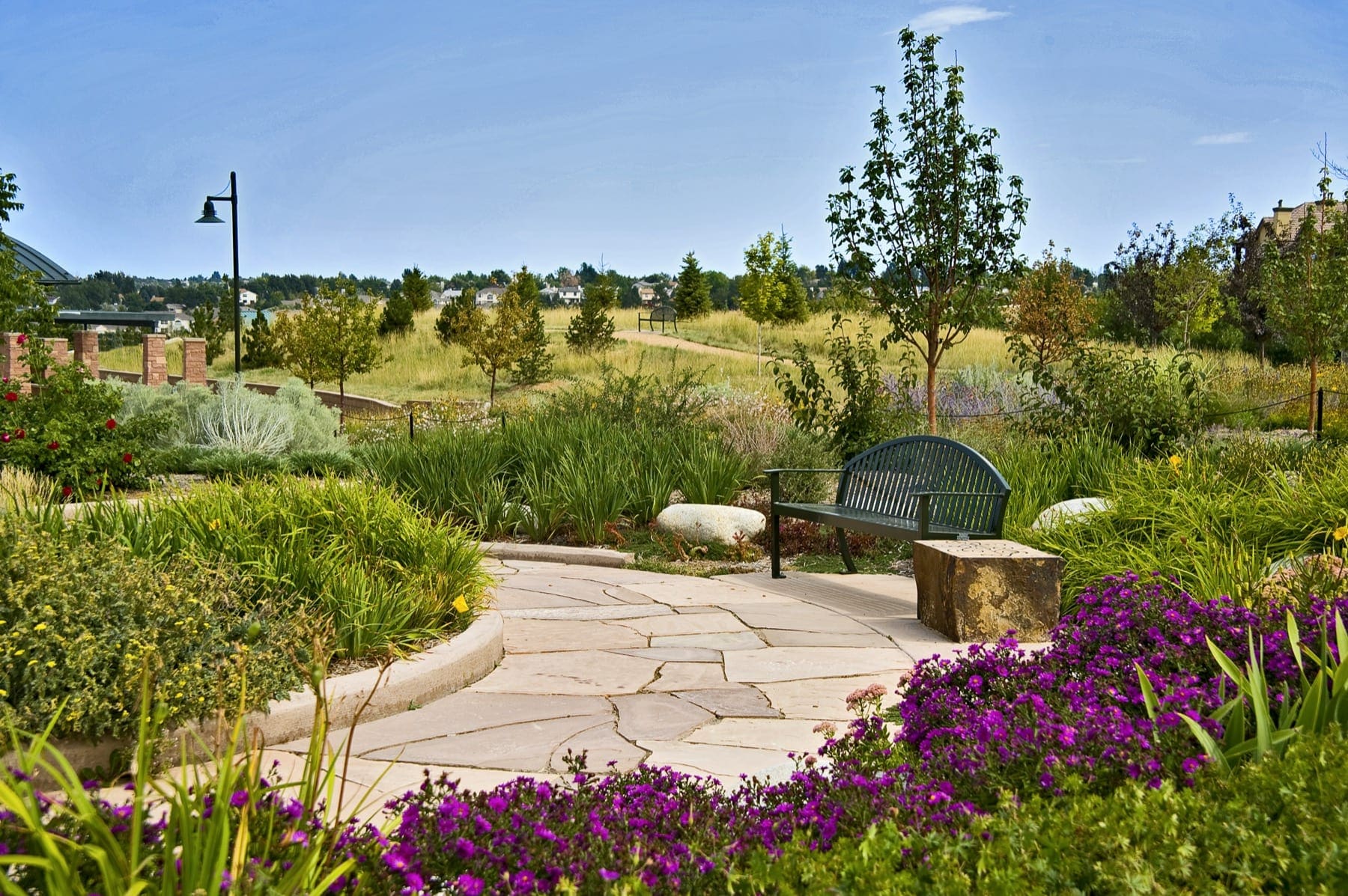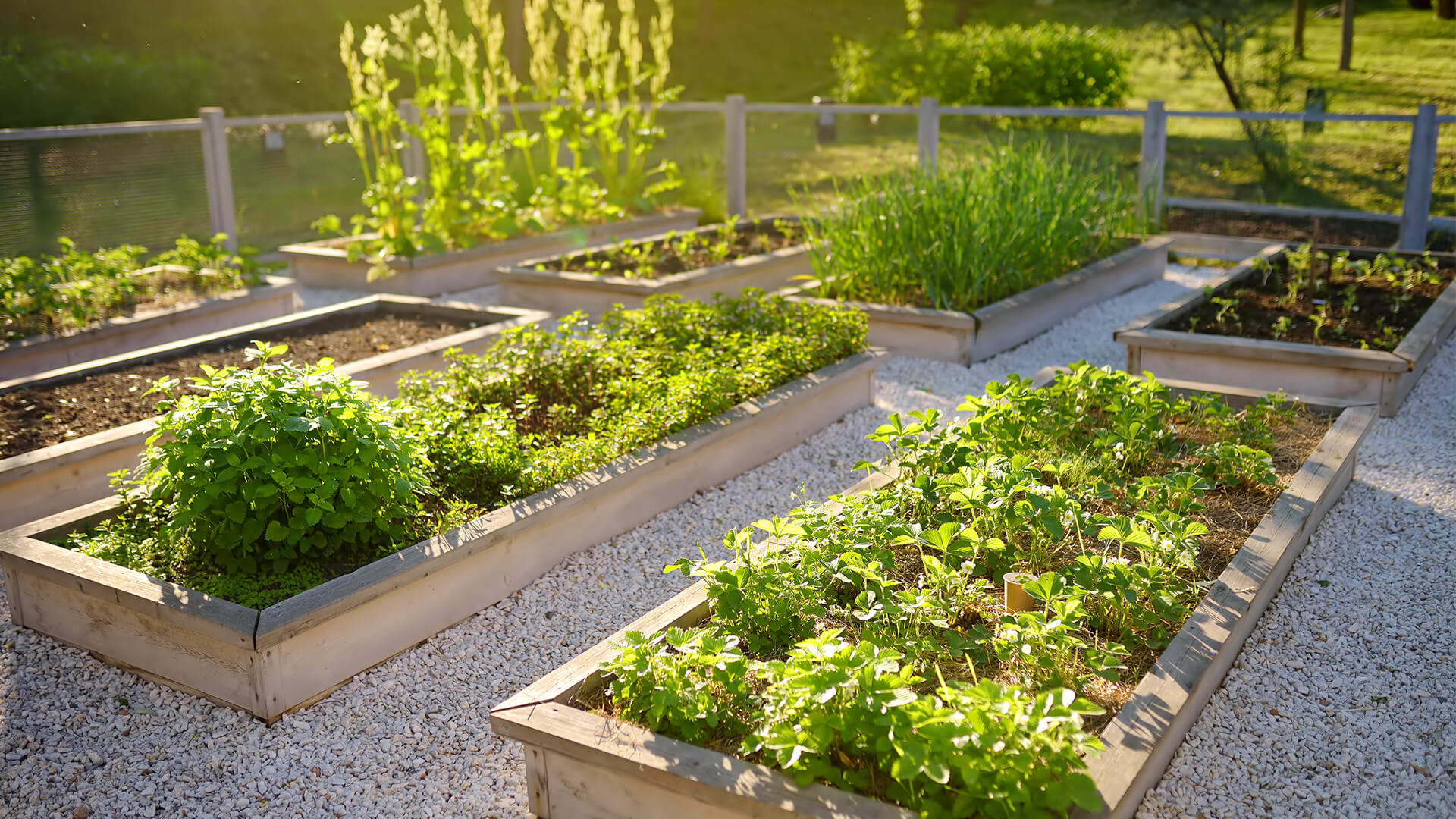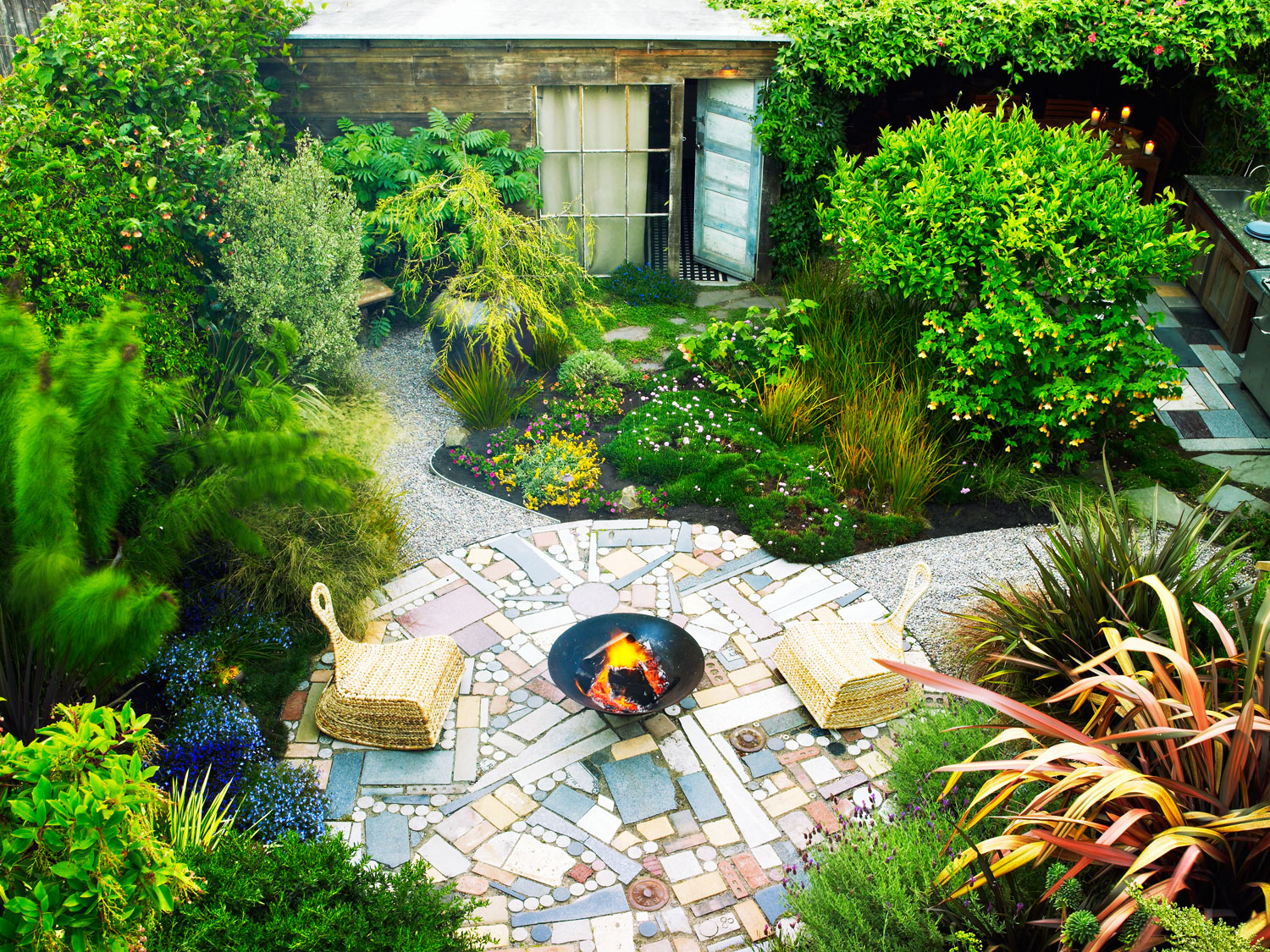Key Principles of Sustainable Garden Design

Sustainable garden design goes beyond aesthetics; it prioritizes environmental responsibility and long-term health. By incorporating key principles, we can create gardens that are both beautiful and beneficial to the planet.
Water Conservation, Integrating sustainable practices into garden design
Water conservation is crucial for sustainable gardening, especially in regions with limited water resources. Rainwater harvesting and drought-tolerant plant selection are two effective strategies for minimizing water usage.
- Rainwater Harvesting: Collecting rainwater from rooftops and storing it in tanks or barrels allows for efficient irrigation during dry periods. This method reduces reliance on municipal water supplies and minimizes water waste. For instance, a 1,000 square foot roof can collect over 6,000 gallons of water annually, enough to irrigate a sizable garden.
- Drought-Tolerant Plant Selection: Choosing plants adapted to local climates and requiring minimal irrigation is essential for water conservation. Native plants are often well-suited to their environments and require less water than non-native species. Examples include succulents, cacti, and drought-resistant grasses.
Soil Health and Organic Matter Management
Healthy soil is the foundation of a thriving garden. Sustainable practices focus on maintaining soil fertility and structure through organic matter management.
- Composting: Converting kitchen scraps, yard waste, and other organic materials into compost provides a rich source of nutrients and improves soil structure. Compost helps retain moisture, enhances drainage, and supports beneficial microorganisms.
- Mulching: Applying a layer of organic mulch, such as wood chips, shredded leaves, or straw, helps suppress weeds, conserve moisture, and regulate soil temperature. Mulch also decomposes, adding organic matter to the soil over time.
Biodiversity and Pollinator-Friendly Landscaping
Promoting biodiversity is essential for a healthy ecosystem. Native plants and pollinator-friendly landscaping play a crucial role in attracting beneficial insects and supporting wildlife.
- Native Plants: Planting native species provides food and shelter for local pollinators, such as bees, butterflies, and hummingbirds. These plants are also adapted to the specific climate and soil conditions, reducing the need for fertilizers and pesticides.
- Pollinator-Friendly Landscaping: Creating a habitat for pollinators involves planting a variety of flowering plants that bloom throughout the growing season. This ensures a continuous source of nectar and pollen for pollinators, contributing to their survival and the overall health of the ecosystem.
Practical Techniques for Sustainable Gardens: Integrating Sustainable Practices Into Garden Design

Integrating sustainable practices into garden design - Now that we've explored the key principles of sustainable garden design, let's delve into the practical techniques that can bring those principles to life. These techniques not only help create a thriving and beautiful garden but also contribute to a healthier environment.
Sustainable Garden Techniques
Implementing these techniques can significantly enhance your garden's sustainability and minimize its environmental impact.
| Technique | Description | Benefits | Examples |
|---|---|---|---|
| Composting | The process of decomposing organic materials, such as food scraps, yard waste, and leaves, into nutrient-rich compost. | Reduces waste, enriches soil fertility, and promotes healthy plant growth. |
|
| Mulching | Applying a layer of organic material, such as wood chips, straw, or shredded leaves, on top of soil. | Conserves soil moisture, suppresses weed growth, and moderates soil temperature. |
|
| Natural Pest Control | Using non-chemical methods to manage pests and diseases in the garden. | Protects beneficial insects and wildlife, reduces chemical pollution, and promotes a healthy ecosystem. |
|
Creating a Sustainable Garden Plan

A sustainable garden plan is a roadmap for creating a thriving, environmentally friendly garden that supports biodiversity, conserves resources, and provides a healthy and beautiful space for enjoyment. It involves careful consideration of your site, plant choices, and resource management practices.
Steps Involved in Creating a Sustainable Garden Plan
The process of creating a sustainable garden plan involves a series of steps that ensure a holistic approach to design and implementation.
- Site Assessment: Understanding your garden's unique characteristics is crucial for making informed decisions. This involves analyzing factors such as soil type, sunlight exposure, existing vegetation, and microclimate. For example, a site assessment might reveal that your soil is predominantly clay, requiring amendments to improve drainage.
- Plant Selection: Choosing the right plants for your site is essential for success. This involves considering factors such as water requirements, mature size, and suitability for your local climate. For instance, selecting drought-tolerant plants in areas with limited water resources will ensure a thriving garden.
- Resource Management: Sustainable garden design emphasizes efficient resource utilization. This includes optimizing water use through techniques like rainwater harvesting and drip irrigation, managing soil fertility through composting and organic amendments, and minimizing waste generation. A well-designed compost system, for example, can significantly reduce waste while enriching your soil.
Checklist for a Sustainable Garden Design
A checklist helps ensure that your garden plan incorporates key elements of sustainability.
- Water Conservation:
- Utilize rainwater harvesting systems to collect and store rainwater for irrigation.
- Install efficient irrigation systems, such as drip irrigation, to minimize water waste.
- Choose drought-tolerant plants that require less frequent watering.
- Mulch around plants to retain moisture and suppress weeds.
- Soil Health:
- Implement composting practices to create nutrient-rich organic matter for soil amendment.
- Use organic fertilizers to promote healthy soil microbial activity.
- Avoid the use of synthetic pesticides and herbicides that can harm beneficial organisms and pollute the environment.
- Biodiversity:
- Plant a variety of native plants that attract pollinators and beneficial insects.
- Create habitats for wildlife, such as birdhouses, bat boxes, and brush piles.
- Avoid monocultures and encourage plant diversity to support a healthy ecosystem.
- Waste Reduction:
- Compost kitchen scraps and yard waste to reduce landfill waste.
- Utilize reusable containers and tools to minimize plastic and disposable items.
- Recycle or repurpose materials whenever possible.
- Energy Efficiency:
- Use solar-powered garden lights to reduce energy consumption.
- Consider using hand tools or electric tools powered by renewable energy sources.
Incorporating Sustainable Practices into Different Garden Styles
Sustainable principles can be seamlessly integrated into various garden styles.
- Formal Gardens: Formal gardens can be designed with a focus on water conservation, using drought-tolerant plants and efficient irrigation systems. For example, a formal garden can incorporate a central fountain that collects rainwater for irrigation.
- Vegetable Gardens: Vegetable gardens are excellent opportunities for implementing sustainable practices, such as composting, companion planting, and crop rotation. Using raised beds can improve soil drainage and reduce compaction, while companion planting can enhance plant health and deter pests.
- Wildlife Gardens: Wildlife gardens are designed to attract and support local wildlife. This can be achieved by planting native plants that provide food and shelter, creating nesting boxes, and providing water sources. A wildlife garden can include a variety of native wildflowers, shrubs, and trees that provide habitat and food for birds, butterflies, and other beneficial insects.
FAQs
What are some common mistakes to avoid when designing a sustainable garden?
Some common mistakes include: neglecting soil health, overwatering, using excessive pesticides and herbicides, and choosing non-native plants that may disrupt local ecosystems.
How can I attract pollinators to my garden?
Planting a variety of native flowers, herbs, and shrubs that bloom throughout the season is a great way to attract pollinators. Avoid using pesticides and provide sources of water, such as birdbaths or shallow dishes.
What are some easy ways to incorporate water conservation into my garden?
Consider using drought-tolerant plants, collecting rainwater in barrels, and using drip irrigation systems to deliver water directly to plant roots.
Can I create a sustainable garden in a small space?
Absolutely! Even small gardens can be designed with sustainable practices in mind. Consider using vertical gardening techniques, container gardening, and maximizing space with multi-level planting.
